Review: LG VX-8100
Nov 17, 2005, 3:00 PM by Jesse Lewin
In-depth review of LG's mainstream EV-DO phone for 2005.
Form
Is it Your Type
The LG VX8100 is a great phone for those who demand the newest thing. Whether it's the latest full-stereo ring tone or the highlight from last night's football game. The VCAST video features make the 8100 indispensable for a those who like to be on the cusp of what's new, and who want to always be connected to the latest sports, entertainment, and information. The media access capabilities make it perfect for the hands of Hollywood teenagers and those aspiring to copy them.
Body
Designed to replace the VX8000, the VX8100 is essentially the same size, but the extensive use of beveled and rounded edges gives it a smaller feel. It feels smaller than a Motorola e815, thanks to its more tapered design - corners are rounded out everywhere, particularly on the bottom of the phone. All the smoothed edges make the 8100 easy to hold, allowing it to sit comfortably in the hand regardless of how you hold it. The phone's width gives it good balance on uneven surfaces, something that proves useful while using the speakerphone. Beveling between the top and bottom half of the clamshell makes opening the phone with a thumb-wedge action easy.
When open, the large edge buttons limit the surface area with which to grip the phone. Thankfully these buttons don't activate easily, so the worry subsides shortly, allowing us to grow more comfortable holding it after the first couple days. Hinge action is smooth and quiet, and suffered no consequence through our regular behavior of whipping the phone shut before dropping it into our pocket.
For the size and shape, and given two large displays and stereo speakers, the phone is certainly lighter than it initially appears. The phone doesn't suffer from attempting to be too light like many large phones attempt to be, something we find to convey a lack of quality manufacturing.
The phone displays a great sense of build quality, with plastics coming together tightly along all the seams, as well as firm closure where the battery and mini SD slot are concerned. The phone's build is confident and reassuring. It inspires trust in our hand and maintained its quality over three weeks of extended use.
Keypad
The phone's main keypad is great to work with for a number of reasons. All the keys have a short travel and respond with a subtle 'click' when they are depressed. In addition, the button size, spacing, and labeling all contribute to making the act of dialing numbers, typing text messages, and physical operation a painless experience.
Verizon's navigation cluster is also quite comfortable. The tactile response to moving a thumb over the four-direction rocker switch and centered OK button was excellent, and made look-away operation easy. One downside: the phone's two softbuttons are a bit too far from their on-screen functions because of the phone's large speakers. Early on, determining which button executed which function took a couple moments too long as a result of this layout.
The phone's CLR key is shared with the speakerphone function. This made initially finding the speakerphone button difficult, as we rarely see CLR keys sharing their function. Once we determined this, thankfully there were no issues with the button's behavior; speakerphone was enabled and disabled, while both on and off calls, without any issue.
The volume, voice command, and camera edge keys were cause for some trepidation. First off, they are all somewhat large, and therefore take up considerable real estate on the phone's edges. Early in our use of the phone, gripping the phone was somewhat difficult, as we tried to avoid pressing edge keys accidentally. Thankfully none of these keys responded from a stray press, and we were able to hold the phone more comfortably, without fear of random action from the phone.
Second with the phone's edge keys is their varying behavior. Launching the camera required us to press and hold the edge key. The same press and hold on the voice command key responded with an error, though it made no indication that the phone must be open to use this function (it must). The volume adjustment buttons did not respond at all with the phone closed. While most of these button behaviors are designed to protect against accidental in-pocket actions, we considered the unresponsive volume key somewhat limiting for situations where quickly adjusting the phone's ring volume is important.
Three S's
Screen
Indoors, the LG's display is brilliant indoors, however it has some serious trouble once you step into daylight. The 18-bit, 176 x 220-pixel output is crisp, clear, and generally effortless indoors.. Outdoors the main display suffers from the applied reflective coating and mirrored border. We spent a lot of time squinting, and even more time trying to find the best way to shadow the display.
The secondary display is equally bright and legible. It powers down its backlight quickly, but remains active for more than a minute after first engaging it, which minimizes the need to engage the backlight multiple times in a short period. Network strength, coverage, and battery life are all visible, as well as icons for ring type, vibrate, voicemail, bluetooth and missed call icons. The one curious element of the secondary display is that by default the time is displayed twice; once in the center of the display and again along the bottom edge. While this is awkward it can easily be turned off through the tools menu.
Signal
Network reception appears ample all over Silicon Valley, except for two areas that are known dead spots. The network strength, 1XrTT, and EV-DO indicators all appear in a row along the top of the display. These were somewhat misleading about what type of coverage we had at any given time.
Voice calls and service took a priority over data. In multiple instances we were able to hold voice calls, but not consistently access VCAST content in the same areas, with the same 1X and EV-DO icons displayed.
We used our friendly neighborhood Apple store, with its stainless steel box construction, to measure holding connectivity in a known weak area. The LG held calls here, but with frequent breaks in sound. This has not been the case with a Motorola e815 also tested in the same store.
Sound
The LG's overall sound quality is fantastic, which we expected given the size of the stereo speakers that make up the bulk of the hinge. Ring tones come through loud and clear, even at medium volume. When pushed to its limits the LG does produce some distortion, but such volume is rarely necessary, even in a crowded pub.
Speakerphone quality is equally good, as the same stereo speakers are pulling all the weight during the call. Microphone noise is minimal, and clarity on the receiving end of a call is very good.
The main earpiece suffers from the same issue most clamshells have - the need to press the edge of the shell into your ear. However, barring this, volume is more than acceptable. Once we adapted to placing the speaker against our ears properly, incoming calls were easy to hear at medium volume.
The 8100 was designed with music playback in mind, as it has clearly marked play/pause, next, and previous track buttons below the secondary display. However the phone does not ship with this feature enabled, and it must taken to a Verizon store for the the upgrade. Our test unit did not include the mp3 player.
Battery
Starting with a full charge, the 8100 stood up to 2.5 days of aggressive use. That included over 3 hours of calls, 20 text messages, a dozen pictures, and over 30 minutes of video playback courtesy of VCAST. Thanks to CDMA's low idle power draw, we were able to leave the phone on overnight during this period, anticipating the stray emergency call. EV-DO usage also seemed to impact the battery far less than anticipated. This sort of battery life means that misplacing the phone charger doesn't ruin things, but taking off for a long weekend without that charger is unfortunately not an option.
Function - Basics
Menus
The Verizon UI, love or hate it, is consistent. The main menu features five different tabs, each with no more than 10 elements per tab. The simplistic layout and minimal menu items allowed us to find each element of the phone's function quickly and easily. The appearance of these menus is relatively static, with simple control over the color hues as the only modifiable option. Even when the "business" theme is selected, the menus retain their cartoony feel; animated for no useful reason, which keeps the phone feeling like a teenage gadget and less of a business tool. Overall the menu layout and navigation is quick and painless, though it lacks a refinement expected with most professional handsets.
Main menu navigation is extremely responsive, with little to no wait for any change in any area of the menu system. Downloaded BREW applications are all quick to load, but once started obviously present their own interfaces. Need For Speed: Underground 2 for instance, took less than ten seconds from app selection to the game's main menu. Online application interfaces also change between providers. Considering Verizon's aggressive UI control, these variations are awkward, particularly in sections of the phone that control making purchases.
Calls / Contacts
Contact profiles hold a significant amount of information. As far as number support, the LG can carry four separate phone numbers, plus a fax and email. Each contact can also have ringtone, picture, and group assignments. The organization of these fields is rather awkward. The secondary mobile number, email address, and fax number fields are at the bottom of the list, separated from the other number and email fields by ring-tone and picture fields.
All of these values were easy to assign, including photo ID, which allowed us to easily select an existing photo, or take a new one on the spot. Considering the 1.3MP camera and high resolution display, we expected the LG to display the full photo when receiving a call on the main display. Instead, only a thumbnail is displayed with the contact name and number above and below the image.
Voice dialing on the LG is a surprisingly pleasant experience. After spending 5 minutes training the voice command system, we simply had to speak the name of anyone in the contact list, and it would appear for us to dial with a single button press. This system proved more usable than others in the event of an incorrect selection, as it did not automatically dial the returned entry.
The voice system also has support for reciting a number sequence, dialing voicemail, and displaying missed calls, messages, and the current time & date. Each of these options proved easy to access.
Messaging
Messaging appears to have been a design priority for Verizon, and so text messaging is quick and simple. Click the left softbutton once to launch the messaging application, click a second time to pick your message type from the menu, and then you're addressing and composing. The screen presents multiple address fields, where you can either enter numbers, or one more click brings us to the contact list. In a perfect world we prefer to compose the text before addressing it, but the speed of the messaging interface minimizes the impact of what we consider to be a backward design . Input is quick thanks to the large keypad and effective T9 implementation. Rarely was the phone unable to keep up with our two-fisted typing.
Incoming texts show up on the LG's secondary display, which allows for quick reading, and makes receiving texts is even easier than composing them. MMS messages are just as easily composed by selected from the main messaging menu.
Email is restricted to web access through the Verizon browser. Support for AOL, Hotmail, and Yahoo are included, and each of them are quick and easy to access. Email access is found through the main messaging menu, or through the browser button on the main navigation cluster.
Function - Extras
Camera
For a 1.3MP camera, something still relatively new to the US market, the LG's photo abilities leave a lot to be desired. Things start out well enough, as the photo application is easy to manage like most of the Verizon UI. The capture screen contains a large status bar, displaying flash, zoom, and resolution information. While zoom can be manipulated directly from the capture screen, resolution must be adjusted through a separate menu screen. The phone's flash can be turned on or off through a separate menu and with the side select button, though because the viewfinder lacks any indication of this, we only discovered the latter method after looking closely at the button's icon.
Photos are taken in landscape mode (1200 wide by 960 tall), however the phone lacks any way to adjust this in software, and so shooting portraits requires a counter-intuitive 90-degree rotation of the phone. The available image effects include normal, sepia, black & white, negative, and solari (more commonly known as posterize). When gripping the phone to take pictures, the capture button under where our thumb naturally fell. However the low position of the camera lens caused frequent trouble; our index fingers occupied the bottom edge of the photo frame, which forced an adjustment of our grip on the phone.
From pressing the photo button to when the application is launched and ready to shoot is just about three seconds. After shooting, saving a picture causes a second and a half wait, before a save confirmation dialog appears, and then returns to the capture menu. Through this process however, we encountered a number of problems. First, from the shutter sound to when the photo is actually captured is about a second. This means that pressing the shutter button, hearing the shutter sound, and then moving the camera resulted in blurred photos. The second issue is that there is no auto-save function, so leaving the photo app or closing the phone jettisons the captured photo.
Finally and most important was the basic quality of images the camera produced. The lack of detail and sharpness, even at the phone's maximum 1200x960 resolution, isn't readily apparent on the phone's display. However once the image is moved to your computer it is decidedly hard to appreciate. The images lack sufficient exposure, with most of the colors buried under darkness which can only sometimes be rescued in a photo editor.
The default send format is Verizon's pix message as either MMS or email, both of which use the same quick and painless messaging interface. Secondary transfer abilities include posting a photo to the Verizon Pix Place website, or moving a photo onto a mini SD card.
Capturing video on the phone is an equally lackluster experience. Video quality is choppy, and there are moments where the capture is paused before regaining motion. The audio playback is on par with the quality on a voice call. Video is recorded at 176x144 resolution in 15 second clips. Both the resolution and length felt arbitrarily small considering the mini SD storage abilities of the phone. The net result: What we shot was entertaining on the phone, but low resolution doesn't hold up once the clips were transferred to our computer via mini SD.
While there is no video editing available in the phone (nor any special effects like what are available for still photos), white balance and lighting adjustments are available, but lacks the special effects of still photos.
Pictures and Videos
The VX8100 registers 20/50 vision, which is rather low for a Megapixel camera. This poor focus from even short distances greatly affects the sharpness of pictures taken from beyond about 8 feet away or so when viewed at full size. Color is dark and dull, even under bright artificial or sunlight. This darkness makes night time pictures, with or without flash difficult to distinguish without photo enhancement, and still fairly lifeless after.

3GPP2 / MPEG-4 format (viewable with QuickTime)
Browse / Customize
Browser
The browser on the phone is exceedingly quick, even when compared to similar VCAST phones like the e815. The formatting of external pages is standard phone fare, with sites like BBC mobile up sans most of its graphics. Text in the browser is crisp and highly legible, and can easily be read at arm's length. Navigation is straightforward, with large main buttons separating content, and traditional blue underlined text for links.
Customization
The phone supports downloaded ringtones of the mp3 variety, as well as polyphonic tones (and femur-on-skull monophonic tones). The included ringtones are all polyphonic, from classical to dance to strange animal noises. There aren't any MP3 ringtones included, something we would've liked to see, particularly in a phone with large, high quality stereo speakers. Ringtones moved via mini SD from our computer were sadly not visible to the phone. Jpeg images could, however, be moved from our computer and used for wallpaper, sent as mms, etc.
The main screen can be adorned with a photo or video, though videos purchased through VCAST will not act as wallpaper. Wallpaper is displayed across the entire screen, with basic status information overlaid on the top and bottom.
Screen customization is limited on the phone, as are shortcuts. The main navigation buttons are configured according to their inscribed icons, with only the down arrow open to customization from a list of nine options. We could also add a personal text banner in the top third of the display. The last element of main screen customization is an analog clock. Because the standard time/date banner across the bottom of the display cannot be turned off, this optional analog clock is as redundant here on the main display as it is on the external.
Other
Watch
The 8100 has the time in a small banner across the bottom of the external display. After the approximately a minute, the external display goes dark, and a press of the music control buttons is necessary to show the time again. It is possible to add a second, larger readout of the time across the center of the display, which while larger to read it does seem redundant. We were able to read the time clearly in most lighting conditions.
Bluetooth
Pairing the phone with our Akono 660 headset worked seamlessly. Pairing was quick, and once connected, the phone showed a discreet bluetooth icon in the lower right corner of both displays. Pressing the headset's main button lead us straight to the voice command screen, something that was both unexpected and exceptionally useful. Call quality through the headset was excellent, and reception held up across 15 feet of household walls with only slight amounts of static.
The 8100 included profiles for both headsets and hands-free car kits. OBEX and serial are not available here, and while pairing it with a Mac using Bluetooth is easy, there are no available services with the 8100.
Extras
The phone does include the standard tool kit. The calendar, world clock, alarm, notepad, and calculator all were straightforward. While the alarm setup screen includes the convenience of displaying the current time below the designated alarm time, the alarm doesn't activate when the phone is turned off. The separate tip calculator proved useful. One screen of operation allowed us to determine the split based on the total bill, desired percentage, and number of people.
Wrap-up
The 8100 is a great phone for diving headfirst into the VCAST universe. It's brilliant color display and quick EV-DO browsing are backed up by large stereo speakers that give online content a great sense of weight. The 8100 does a great job of presenting Verizon's VCAST service as a great source of entertainment. Many times using while testing we chose online video content over whipping out an iPod for short periods. Outside of that walled garden however, the 8100's substandard camera, simplistic UI, and unimpressive battery keep this phone from fulfilling it's potential as the ultimate multimedia handset.
Comments
Picture messaging
Other than that, though. I love this phone.
8100 Not on Verizon Site
Usually when on of their phones is out of stock it says so (but they keep the phone on the site).
Anyone have a clue??
(continues)
(continues)
Mobile Phone Screen Capture
BTW, How did you do the screen captures? Digital Camera? I know there's a few apps for Nokia devices, but haven't found one for non-Nokia.
Good review
Here's my take:
Reasonably nice to hold and handle, although the flip open angle is a little too snug for my liking. I like my phones to open flatter.
The speakers look like a big womans hips.
I was seriously tripped up bu the video recorder. I've been using a Sharp 903SH to video blog my travels around the world and half way through the intro to my spiel the LG stopped recording! I thought it was broken. It sure was a shock ...
(continues)
6 tabs??
Are you positive there are 6 tabs? I count five, but hey, math was never my strong subject.
Anyway, nice review. Thanks for taking the time to get all of the information right... 😳
Six tabs, five tabs, not much difference. They have the more important parts right.
On site observations!


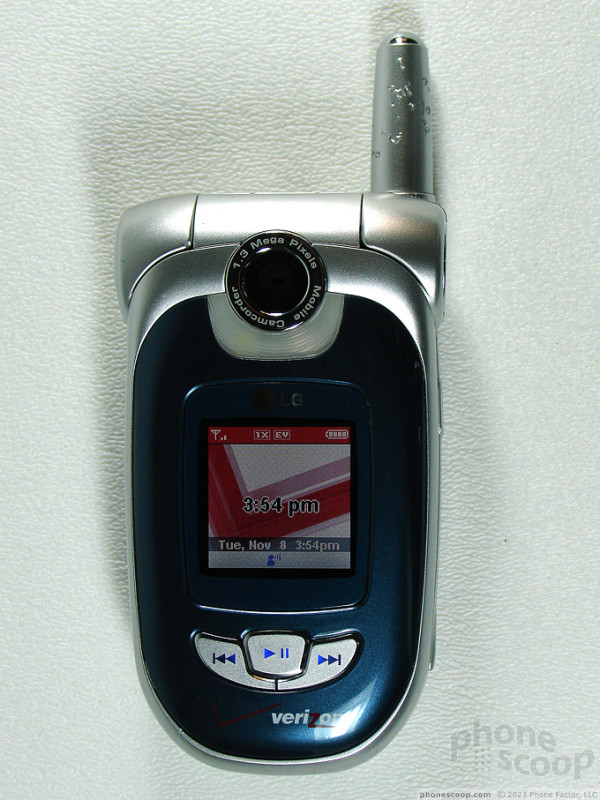




















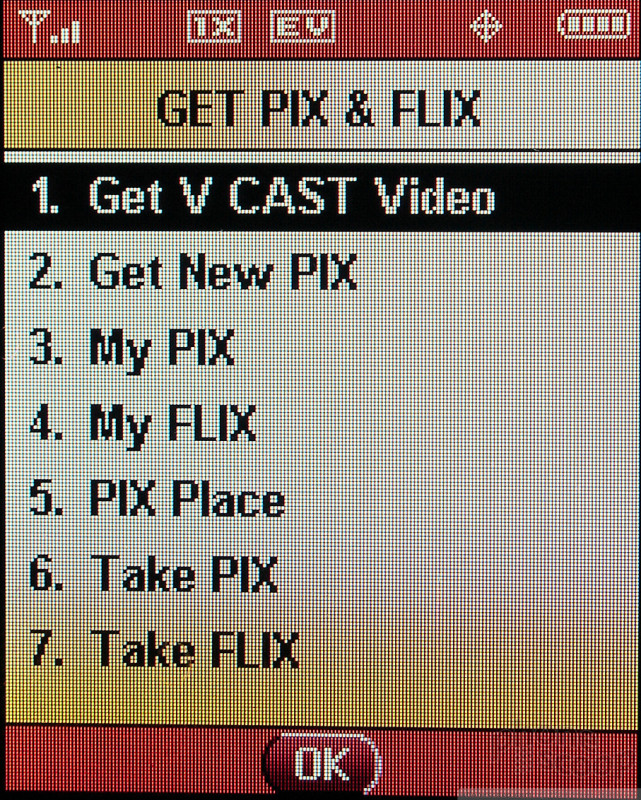





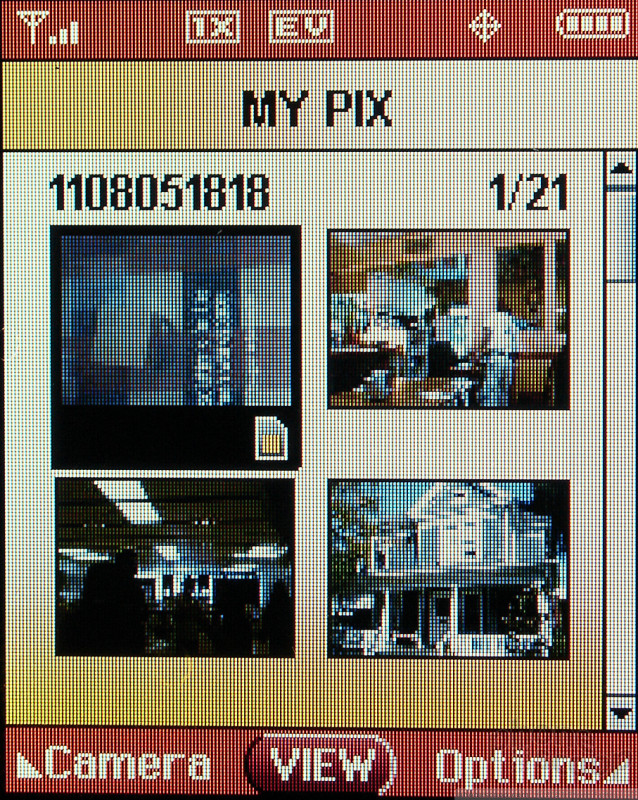






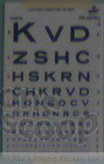




















 CTIA 2005
CTIA 2005
 iPhone 15 Series Goes All-In on USB-C and Dynamic Island
iPhone 15 Series Goes All-In on USB-C and Dynamic Island
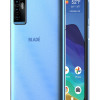 ZTE's New Phone for Visible Offers Wireless Charging for Under $200
ZTE's New Phone for Visible Offers Wireless Charging for Under $200
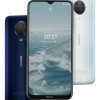 Nokia Brings New G Series to US
Nokia Brings New G Series to US
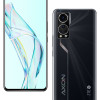 ZTE Launches Axon 30 with Hidden Front Camera
ZTE Launches Axon 30 with Hidden Front Camera
 LG VX-8100
LG VX-8100


